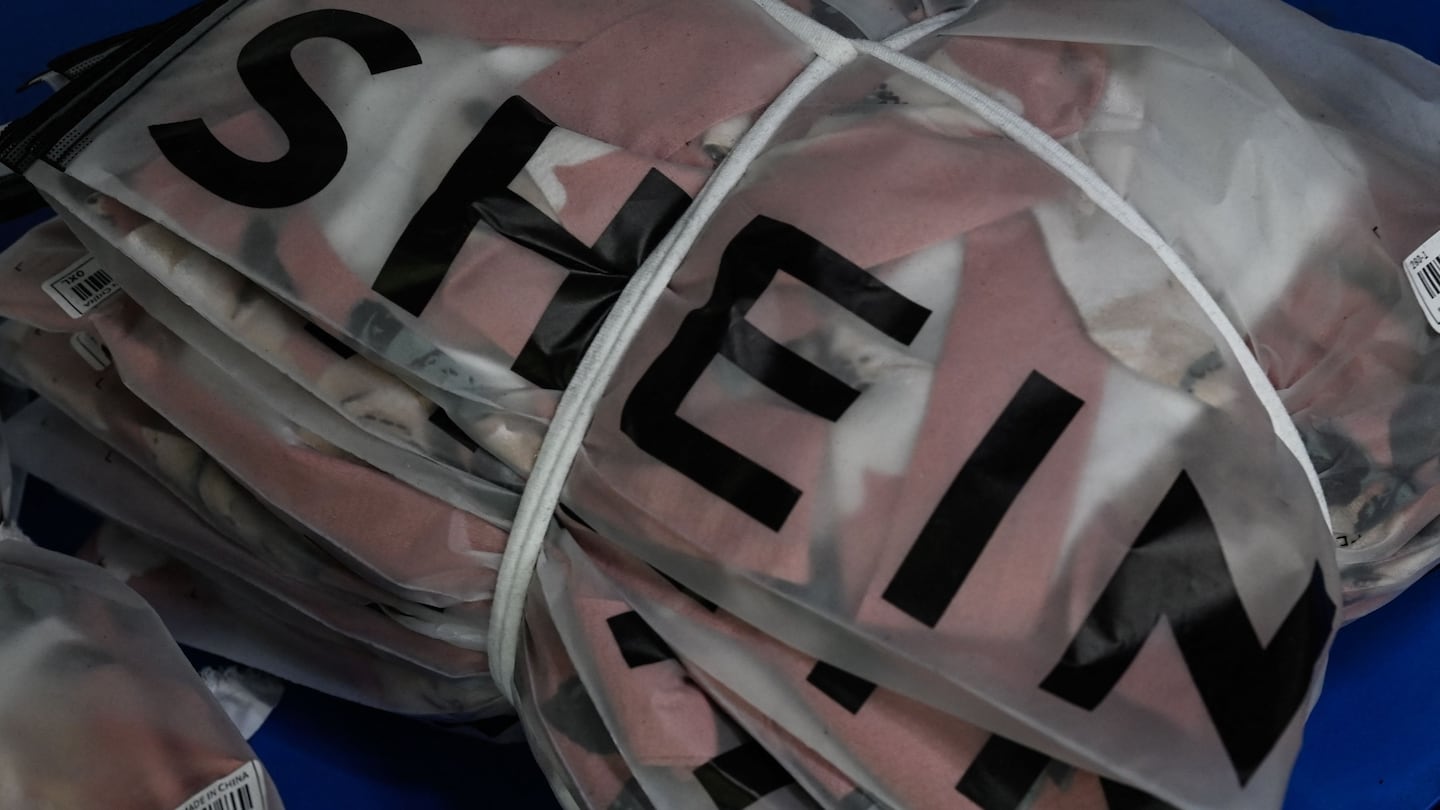
The Business of Fashion
Agenda-setting intelligence, analysis and advice for the global fashion community.

Agenda-setting intelligence, analysis and advice for the global fashion community.

It probably seemed like a good idea at the time.
Last month, Shein invited 50 American influencers to visit some of its manufacturing centres, as part of a wider campaign to rehabilitate its reputation in its biggest market. US lawmakers, regulators and activists have hammered the fast-fashion giant for months, alleging everything from human rights violations to skirting customs duties.
The influencer trip was meant to show off a different side of Shein: Influencers shared videos of a sleek, airy factory and warehouse filled with automated packaging and workers seated sewing garments at spacious desks.
But once the videos started hitting TikTok, it became clear the operation wasn’t going to do much to change people’s minds. Users called out the influencers for sharing “propaganda.” One user even made a satirical video comparing the trip to touring Triangle Shirtwaist Factory, where poor working conditions led to a fire that killed 146 people in 1911. The backlash was so intense, and so overwhelmingly negative, that it was written up in The New York Times and other media outlets.
ADVERTISEMENT
A Shein spokesperson told BoF “Shein is committed to transparency and this trip reflects one way in which we are listening to feedback, providing an opportunity to show a group of influencers how Shein works through a visit to our innovation center and enabling them to share their own insights with their followers.”
Shein’s factory tour was the latest in a series of misfires involving influencers working with big brands. In January, cosmetics label Tarte was slammed as out-of-touch when it flew 50 creators to Dubai for an elaborate getaway. In April, Bud Light sent a customised can to transgender influencer Dylan Mulvaney; the conservative backlash that followed caused the brand to lose its status as the US beer sales leader. And in May, Tarte found itself at the centre of a firestorm again when Bria Jones, a Black influencer the brand flew to an F1 race in Miami, claimed she received inferior treatment compared with white influencers on the same trip. (Jones later said she had worked things out with Tarte).
Influencer marketing isn’t going anywhere. But as it’s grown from an advertising niche to a primary method of connecting with consumers, the risks of building marketing strategies around creators has grown. Some of the same factors that make influencers such appealing ambassadors — their reputation for independence and authenticity — can lead to a campaign going off the rails. While that’s always been true, TikTok’s algorithm makes it more likely that a sponsored post will be seen outside a creator’s fan base, or that a misstep will instantly go viral.
“Brands have lost control of their stories,” said James Nord, founder of the influencer marketing platform Fohr. “As a brand, you can no longer just be like, ‘This is the story we want to tell, we’re going to use ad dollars to tell it and that is what consumers know about us.’”
Tarte, Shein and Bud Light followed the influencer marketing playbook to the letter, but didn’t anticipate how their campaigns would be viewed by a wider audience.
In this faster-paced, wider-reaching online environment, the consequences are greater, but so are the rewards. BoF unpacks what’s changed in influencer marketing, and how brands can avoid getting caught flat-footed.
Without a doubt, the biggest catalyst for change in influencer marketing in recent years is the rapid growth of TikTok. The platform catapulted short videos to the top of the content creation food chain, which had been dominated by Instagram’s images. Just as revolutionary was its “for you” page, which served up to users whole worlds of content they might never have sought out on their own.
Plenty of brands have used this to their advantage, allowing the algorithm to put their products and marketing in front of new customers. But that requires a mindset shift: where social media campaigns were once all about precision, campaigns now must have both the target customer and the general public in mind.
ADVERTISEMENT
“Something can just become so viral on TikTok so fast that the stakes are really high for brands,” said Danielle McGrory, the founder of communications agency Communité. “An incorrect pairing, partnership or incorrect message can just spread like wildfire.”
The nature of influencer partnerships has changed, too. In Instagram’s late-2010s heyday, hiring a creator was the best way to reach their audience. Now, there’s greater value placed on the content itself, with influencers playing the role a traditional ad agency usually does, making the ads brands then peddle to the masses. Brands can hire an influencer to create a video, and then get it in front of the right audience through paid advertising.
Consumers are also more aware of how the influencer marketing industry operates. They’ve become more sceptical of paid content, especially if it feels off for a particular creator.
“Consumers have gotten smarter, they’re able to identify authentically promoted content,” said Evan Wray, co-founder of Mavely, a performance marketing influencer platform. “If one day, they’re selling Pepsi, and the next, they’re selling Coke, everyone knows it’s just a pay-to-play experience.”
Brands should approach every partnership with the knowledge that posts may be seen beyond a creator’s follower list.
That means being more careful about who to work with. What is the conversation like in an influencer’s comments? Have they said anything in the past that doesn’t align with a brand’s values?
“You really have to go further than just aesthetics,” said McGrory. “Years ago, when you had your Instagram community, it was much more predictable. Now, you’re going into places where you’re not going to know who it reaches in the end.”
Brands should also realise the limits of influencer marketing. Creators can move the discourse when opinion about a company is in flux. But if consumers have a fixed idea about a brand — as many did with Shein — influencer content from a factory tour wasn’t going to change their minds. The same advice applies to the influencers themselves, who need to determine whether a partnership will erode trust with their audience, Wray said.
ADVERTISEMENT
Most importantly, brands need to be prepared for trouble. That means gaming out worst-case scenarios before the first posts go up, and giving creator partners the tools to deal with them, such as explaining talking points to common questions.
Still, some problems can’t be anticipated, so brands need to be prepared to act quickly to respond in the moment. Brands should be prepared to stand by their partners, McGrory said, unless they doesn’t hold up their end of the contract. Brands, after all, have more power to withstand backlash than an individual.
Mulvaney has criticised Bud Light for failing to stand by her, or even reach out, in the wake of the online attacks; by distancing itself, the brand further alienated its progressive customers while failing to win back conservative ones.
A spokesperson for Bud Light’s parent company Anheuser-Busch Spokesperson said: “We’ve said, we remain committed to the programs and partnerships we have forged over decades with organizations across a number of communities, including those in the LGBTQ+ community. The privacy and safety of our employees and our partners is always our top priority.”
“It’s always hard to guard against bad faith hate campaigns,” said Nord. “To have a boycott over one sponsored post, nobody involved in that partnership could have anticipated what happened.”
A panel of experts, including BoF’s Lauren Sherman and Diana Pearl, detail how the business of influencing has evolved — and where it’s all going.
Influencers who gained online fame for offline pursuits are rapidly earning brand attention, but working with them requires a different type of partnership.
As the creator space has matured, brands must be thoughtful about crafting a strategy that leverages influencer marketing’s full power, considering everything from talent scouting to the effectiveness of metrics.

Diana Pearl is News and Features Editor at The Business of Fashion. She is based in New York and drives BoF’s marketing and media coverage.
Practitioners of this historically behind-the-scenes profession are building powerful followings, riding a wave of interest in how the fashion sausage is made. But even the highest-profile PRs caution that the client still has to comes first.
Join us for a BoF Professional Masterclass that explores the topic in our latest Case Study, “How to Create Cultural Moments on Any Budget.”
When done effectively, a cultural partnership can rightfully earn its own place in the zeitgeist. But it’s not so easy as just hiring a celebrity to star in an ad campaign; brands must choose a partner that makes sense, find the format that fits best and amplify that message to consumers.
Calvin Klein’s chief marketing officer Jonathan Bottomley speaks to Imran Amed about the strategy behind the brand’s buzzy Jeremy Allen White-fronted campaign.